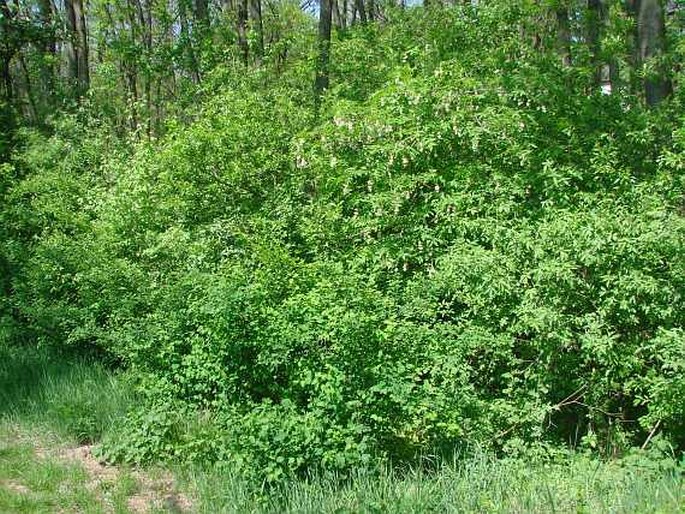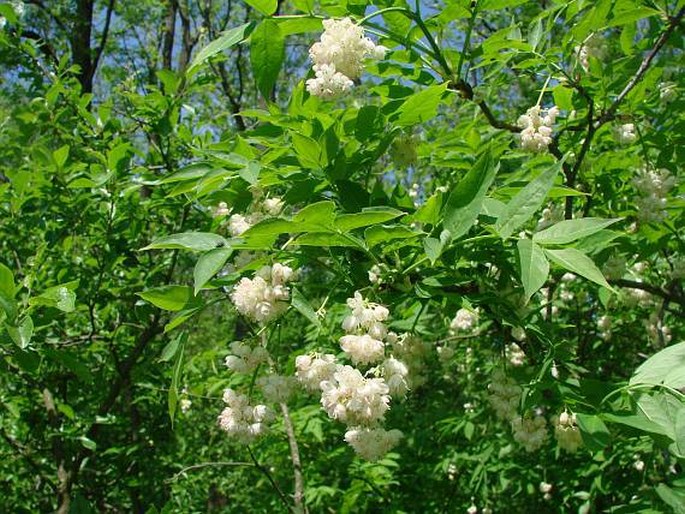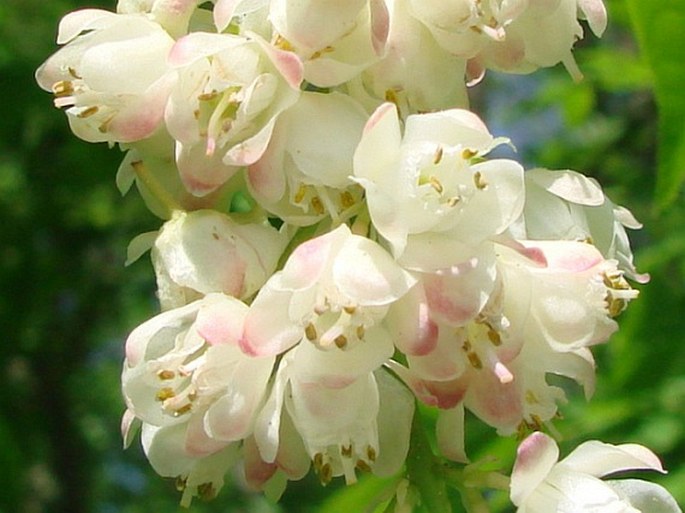Syn.: Staphylodendron pinnatum (L.) Crantz
Family: Staphyleaceae (DC.) Lindl.

Distribution: Central and southeastern Europe, northward to southern Moravia, separately it is found in southern Germany, Bohemia, and southern Poland, southward to central Italy and Bulgaria, eastward to western Ukraine and northern Turkey.
Ecology: It grows in oak-hornbeam and ravine forests, secondarily around churches and chapels. It blooms from May to June.
Description: Shrub up to 5 m tall. Leaves opposite, pinnate, stipulate, leaflets 5–7, 5–10 cm long, ovate-oblong, acuminate, serrulate, glabrous. Flowers in terminal panicles, hermaphrodite, panicles 5–12 cm, oblong, pendent; sepals and petals 5, free, sepals ovate, whitish, about as long as petals, petals 6–10 mm, oblong, whitish. Fruit a few-seeded capsule, up to 4 cm long, subglobose.
Use: The European Bladdernut is a favorite shrub in older gardens. It is a magical plant in Slavic folklore. The seeds of this shrub can be used to make jewelry and rosaries, the wood was also used to make small crosses.
Threat and protection: The species is protected by law in Poland, Ukraine and Russia.




These images were taken in Czechia, Bohemia, Chotuc (May 1, 2011).


